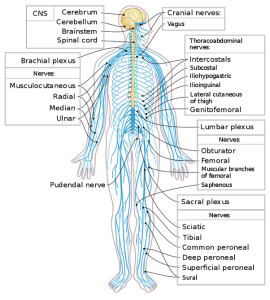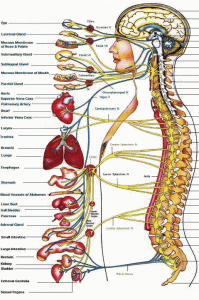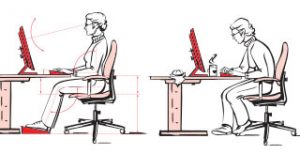- New Patient Line:
- (907) 336-0200

Chiropractic 101
In my experience most people who go to the chiropractor don’t care too much to know exactly what is being done and why, as long as the problem they come in for gets better. Given how busy most of us are and how many things there are to keep track of every day, this is completely understandable. However, I also think this is a big mistake, and I’ll tell you why.
Take Jim, for instance. He knows that chiropractic is good for right arm pain because when he came into the office his right arm was painful and numb, and when we adjusted his neck the problem went away. Jim doesn’t know about the 31 pairs of nerves that exit between the vertebrae in his spine. He doesn’t think about the fact that the nerves from his neck don’t just go down his arm, but also go to the face, ears, throat and thyroid gland. But when I bring those facts up, it doesn’t take him long to make the connection and ask about his youngest kid who has been dealing with chronic ear infections for the past few years. We were able to check the boy’s spine and correct the subluxation that was leading to the weakness that allowed the infection to keep coming back. Furthermore, they were able to avoid having tubes put in the boy’s ears.
Jim didn’t need to understand chiropractic for his own arm pain to get better, but making the connection between chiropractic and his son’s ear infections required an additional level of understanding. That’s why I think it’s important for people to have a basic understanding of how chiropractic works.
Those 31 pairs of nerves that exit between the vertebrae of your spine carry messages between your brain and every part of your body. If a misalignment of the vertebrae in your spine affects the ability of a nerve to carry  information from one place to another, you have a subluxation, and that subluxation can cause problems.
information from one place to another, you have a subluxation, and that subluxation can cause problems.
The important part in that little explanation is the part about nerves going to every part of your body. People often have no trouble at all making the connection between the nerve system and something like sciatic pain in their leg. But with other problems that are just as dependent on the nerve system, they fail to make the same connection.
For example, Karen comes to my office because she has sciatic pain shooting down the back of her right leg. She correctly assumes that this is coming from a problem in her low back–a spinal problem affecting the nerve that goes down her leg. When we correct the subluxated vertebrae in her spine, the pain in her leg goes away, but after a couple months she also finds that the painful period cramps she has had all of her life seem to have gotten much better. She asks me, “Could this have anything to do with the adjustments?”
 The nerves that exit between the vertebrae of her lumbar spine not only go down her leg, but some of them also go to the reproductive organs and can cause period problems. If it hadn’t been for the sciatic pain shooting down the back of her right leg, she never would have made the connection between the nerve system and the painful menstrual cramps. Instead she would have continued to deal with the cramping and any other problems those nerves were causing.
The nerves that exit between the vertebrae of her lumbar spine not only go down her leg, but some of them also go to the reproductive organs and can cause period problems. If it hadn’t been for the sciatic pain shooting down the back of her right leg, she never would have made the connection between the nerve system and the painful menstrual cramps. Instead she would have continued to deal with the cramping and any other problems those nerves were causing.
The nerves that are affected by subluxated vertebrae go to many different areas of the body and control all kinds of different processes. Chiropractic adjustments correct the subluxated vertebrae so that the nerves can exert normal control over their targets.
Is there a painful problem or uncomfortable condition you or someone in your family is dealing with? Please consider the health and integrity of the nerve system whenever you are faced with unexplained pain or dysfunction. Chiropractic may be able to help without the use of drugs or surgery!

